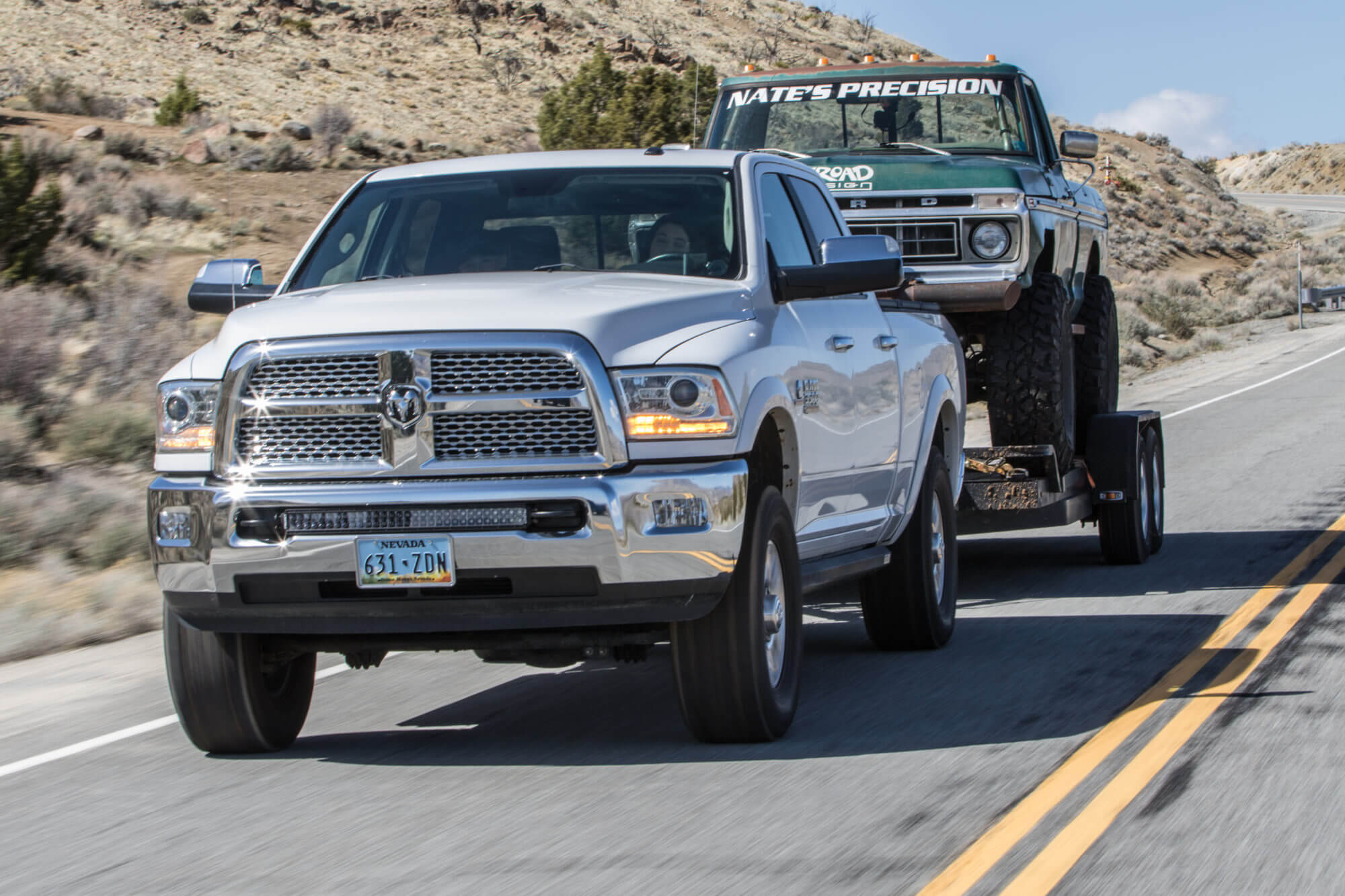
Everything You Need To Know About Car Trailers
Photography by Harry Wagner
Most 4x4s do double duty as daily drivers and weekend warriors, and with modern Jeep Wranglers and Toyota Tacomas you don’t have to make many compromises with a vehicle that can do both. Still, having a car trailer can be a huge benefit when you are traveling far from home and don’t want to wear out your 37-inch-tall M/T tires. And if you break far from home, the trailer can be worth its weight in gold. Unlike getting a license to drive though, there is no drivers’ education class for how to load a trailer. We’ve made just about every mistake in the book over the years, and most of them come from being in a hurry. Below are some lessons that we learned the hard way, we share them in the hopes that you will not suffer the same fate.
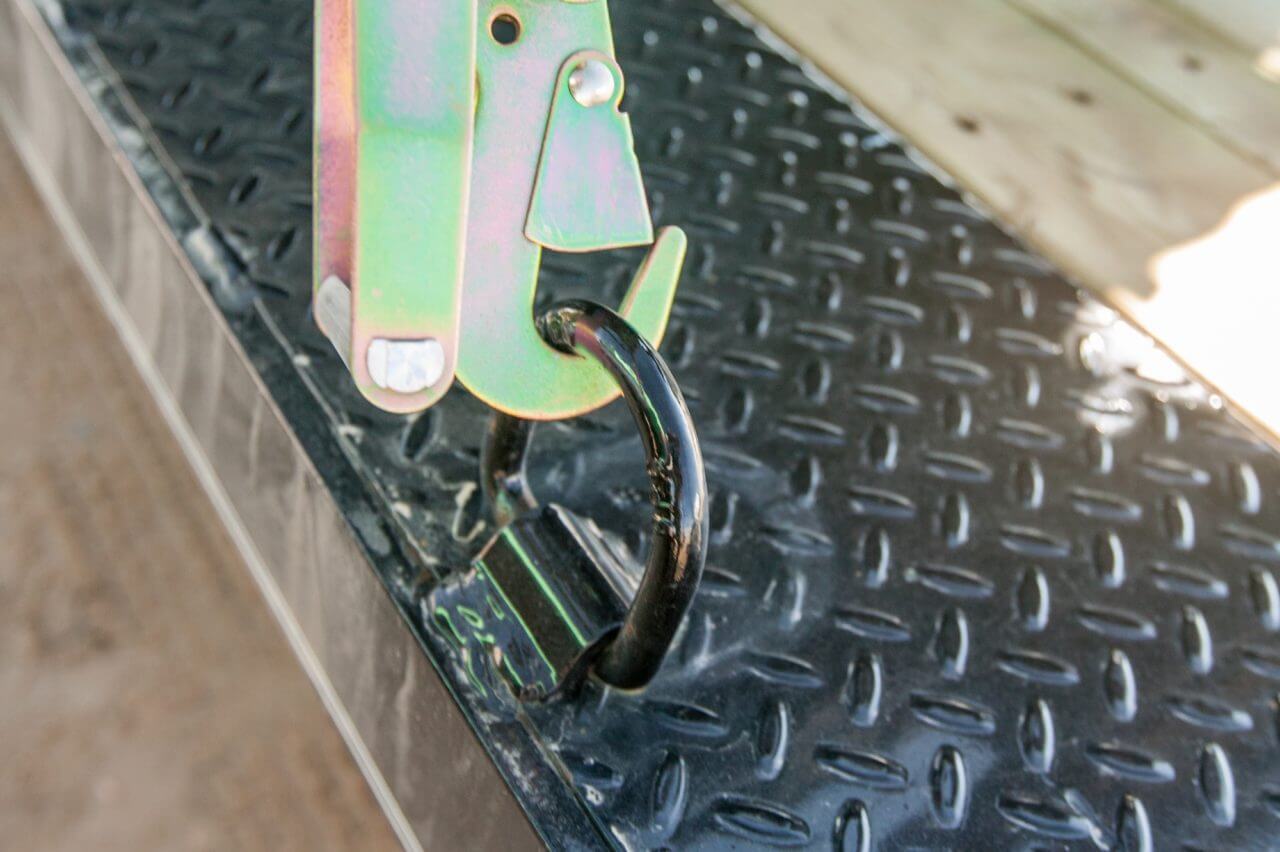
Proper tie down points are important for loading different length vehicles. We prefer to use these welded on rings rather than the stake pockets because the stake pockets tend to bend the hooks on our straps due to side loading.
Hooking The Trailer To The Tow Rig
The first thing that you need to do before loading your trailer is hook it up to the back of your tow rig. While it is helpful to have someone spotting you as you back the truck up to the trailer (particularly if your vehicle is not equipped with a backup camera), our preference is to have one person hook the trailer up, including latching the hitch, hooking up the wiring, attaching the safety chains, and raising the foot on the trailer jack. Otherwise you risk thinking that the other person did one of these tasks and finding out the hard way that the jack wasn’t raised when you tear it off. That makes disconnecting the trailer from the tow rig a challenge! Also, ensure that the wiring is routed properly to avoid rubbing during turns and that the safety chains are long enough to allow full turning but not so long as to drag on the ground. We cross the chains so that the tongue of the trailer falls on the chains should disaster strike.
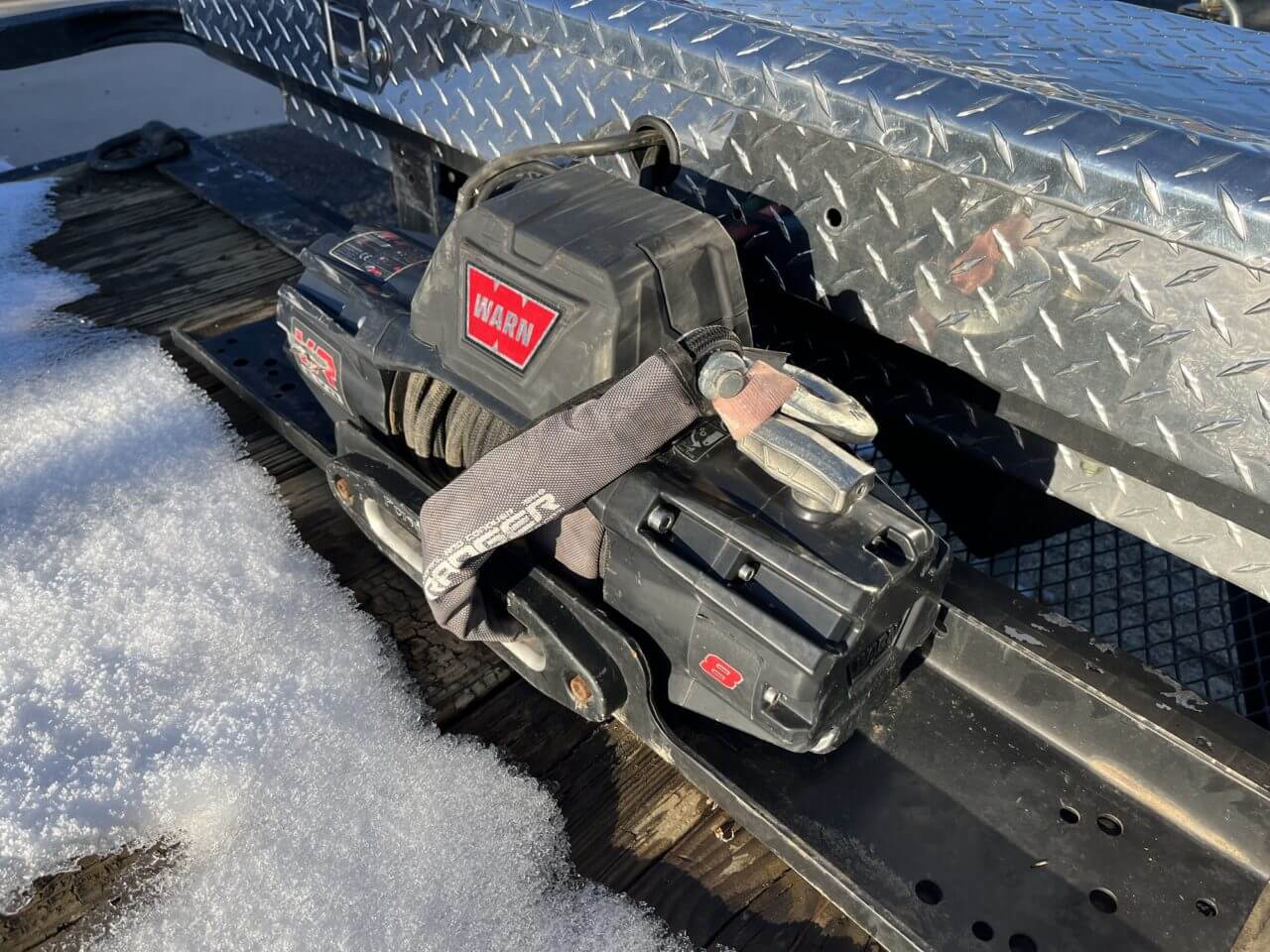
A winch can be a valuable addition to the front of your trailer if you are regularly dragging home non-running vehicles. Note that you will also need a battery in order to power the winch. Some wire the battery to the trailer wiring to charge it through the tow vehicle, while others prefer the simplicity of just hooking the battery to the winch and then removing it for changing when they return home.
Wood Deck or Metal Deck?
Car haulers are available with metal or wood decks. Wooden decks tend to cost less initially, but the wood will eventually need to be replaced. Wooded decks are not as slippery or noisy as metal decks, but the wood can crack or buckle under heavy loads and sometimes you end up with splinters when you are tying down a vehicle. Common sizes for both metal and wood deck car haulers vary including 16, 18, and 20-foot. There aren’t many downsides to a 20-foot trailer over a 16-foot trailer, when you are towing with it the extra space can be useful. If you plan on towing a longbed, crew cab truck you will need an even bigger trailer. At this point a gooseneck might make more sense than a bumper pull trailer.
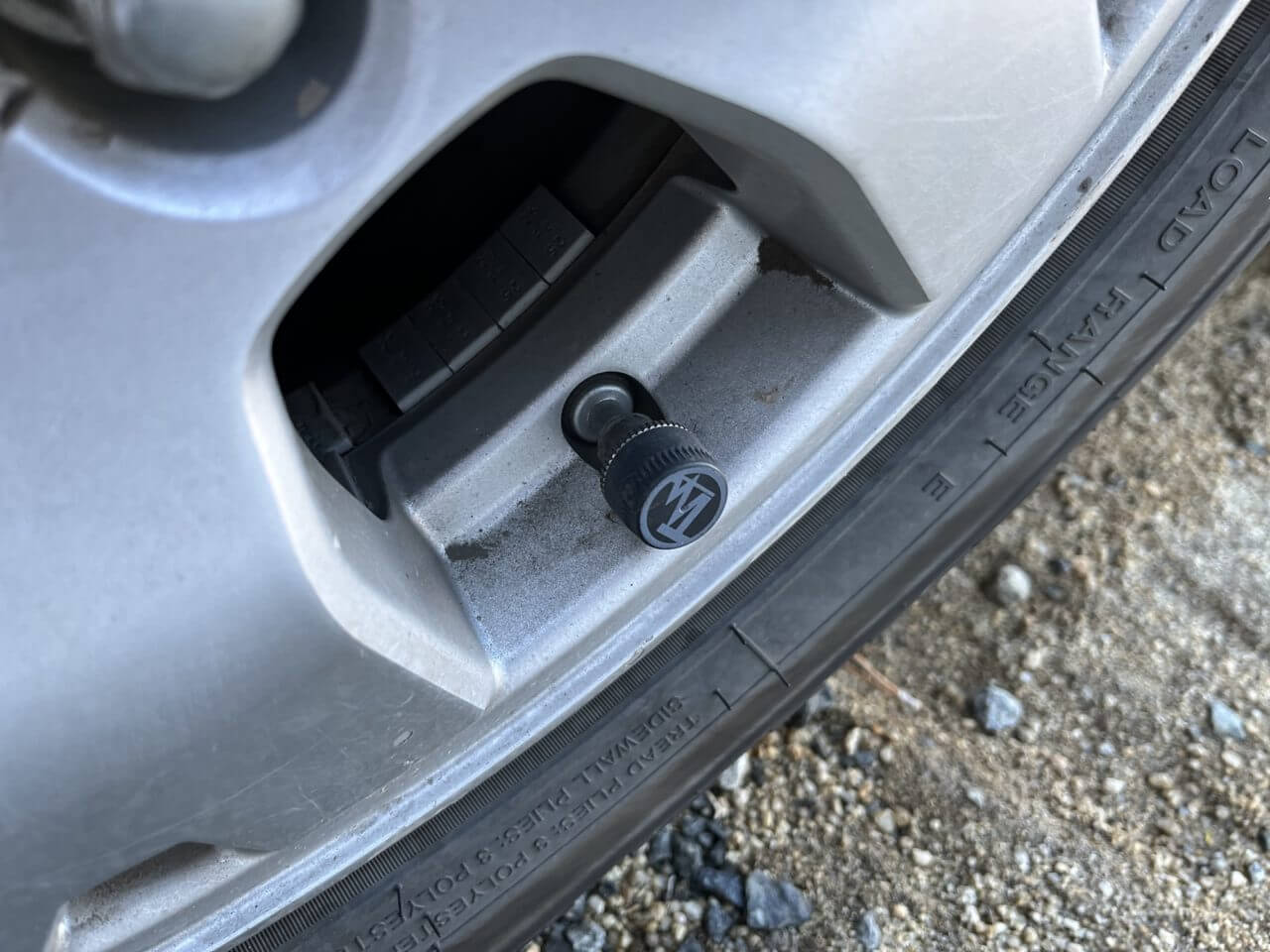
Tire pressure monitors are common on new vehicles, but they are also available through the aftermarket with systems that install inside the wheel (like OEM applications) or use a simple valve cap. The monitors used on this trailer connect to an app on your phone and display tire pressure and temperature, with warnings when the tire is outside the user-defined range.
Trailer Axles and Tires
Trailer axles are generally rated as 3,500, 5,000, or 6,000 pounds each. The combined rating for both axles should be greater than the weight of the trailer and the vehicle loaded on the trailer. We recommend getting brakes on both axles, this is a minimal added expense and will provide you with increased braking capacity. Also, trailer axles are available in a variety of different bolt patterns. If you can match the bolt pattern to your tow rig it will give you more flexibility if you get a flat tire.
If you do get a flat tire on your trailer, you want to change it as quickly as possible since the only remaining tire on that side of the trailer is now holding all the weight and could also fail. Sometimes this is easier said than done since it is difficult to see the tires on your trailer, but tire pressure monitors can be added in order to alert you to a flat. If you do get a flat, using a floor jack or an ARB Jack is helpful, or you can drive up on a piece of wood to raise the trailer enough to get the new tire on the trailer. Having an electric impact is helpful too since the flat tire is already off the ground and the wheel might just try to spin when using a normal ratchet.
You can run LT tires on your trailer, or even a trailer tire on your truck if you are in a bind. The two are not the same though. Light truck tires (LT) are while trailer tires (ST) tend to have thicker sidewalls and a narrower tread since they are not applying power to the ground or making sharp turns. Trailer tires are designed for low rolling resistance at the expense of traction, with stiff carcasses to carry heavy loads.
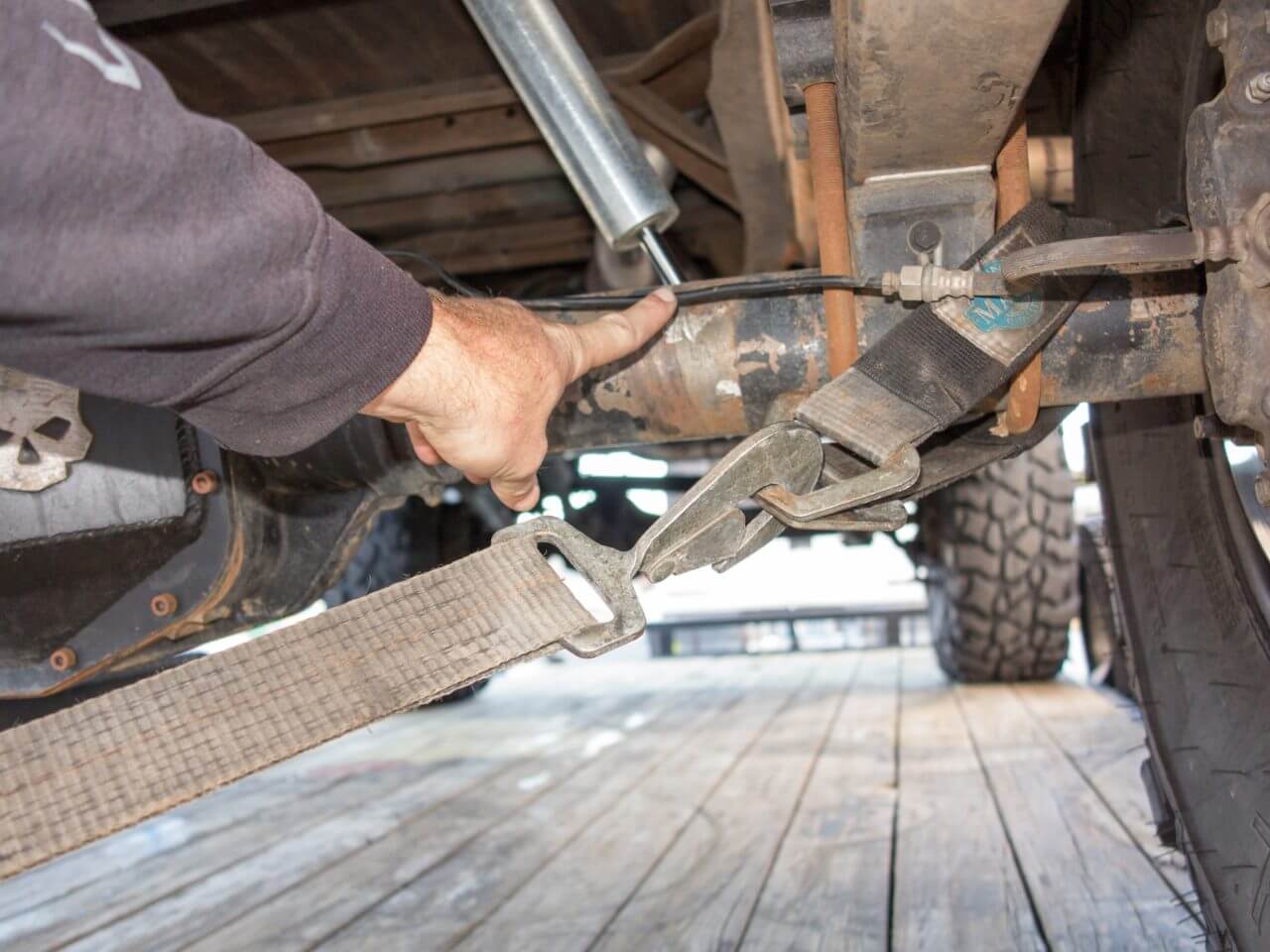
When strapping down your vehicle, ensure that you are clear of the brake lines and any other components that could be damaged. You don’t want to fix the vehicle by the steering components either, but if it isn’t possible to strap around the axles we have used the lower control arms to tie down our vehicle.
Loading The Trailer
Once you have your trailer hooked up to the tow rig, it is time to load your rig. Take the ramps out and put the retaining hardware in your pocket so you don’t misplace it. The ramps need to be wide enough to line up with the tires, we often see people put the ramps narrower than required and have to reposition them. Pull your vehicle up on to the trailer until you see the suspension on the tow rig start to drop. Too far forward will result in light steering on the tow rig. Too little tongue weight on the trailer will cause the rear of the tow rig to sway going down the road, so it is important to get this right. Reposition the vehicle on the trailer if you have to, and take note of where it sits for future trips.
Like hooking the trailer to the tow rig, we recommend one person straps down the trailer to ensure that nothing gets overlooked. For instance, you did put those ramps away and pinned them, right? You don’t want to drive off with your ramps dragging behind the trailer! On an IFS vehicle we typically go through the front lower control arms, and on a solid axle we go around the axle tubes as long as none of the brake lines are in the way, otherwise we put the straps around the lower control arms. There is some debate about whether to cross the straps or not. We typically cross one end and leave the other end straight, but that is largely a function of providing extra length to the straps by crossing them. It is better to have straps that are too long than too short, since it gives you more options in where you position the vehicle. Wrap up the excess so that they don’t flap in the wind and fray. We generally fold the strap flat in 18-inch lengths and route it through the handle. We tighten each corner snugly and then go around and tighten them as much as possible. We also check the straps each time we stop for fuel.
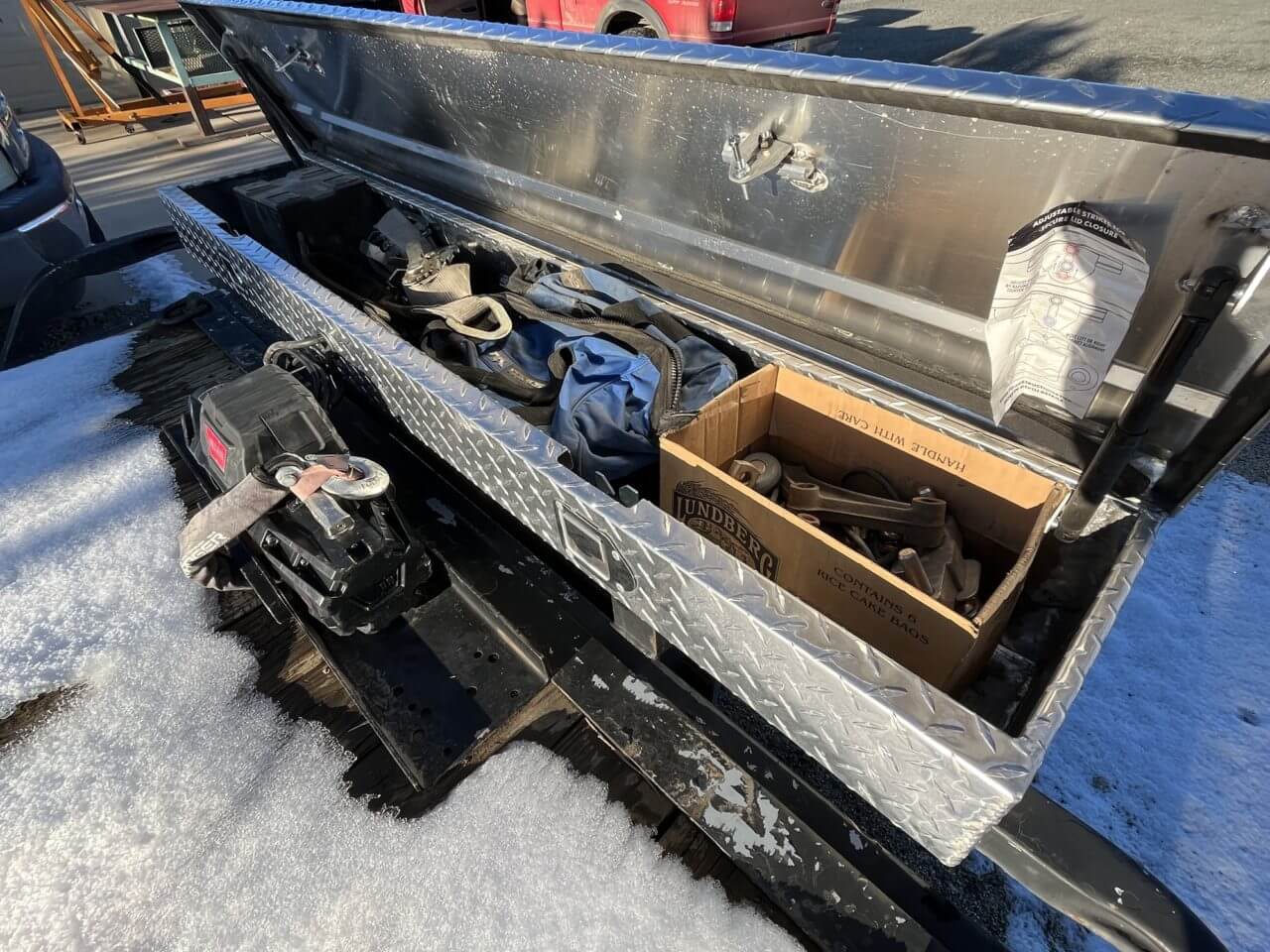
A storage box on the front of your trailer deck or the tongue is a handy place to store items like your straps. Just ensure that the box doesn’t hit the tow vehicle when the trailer is fully turned or you risk damaging both the truck and the storage box.
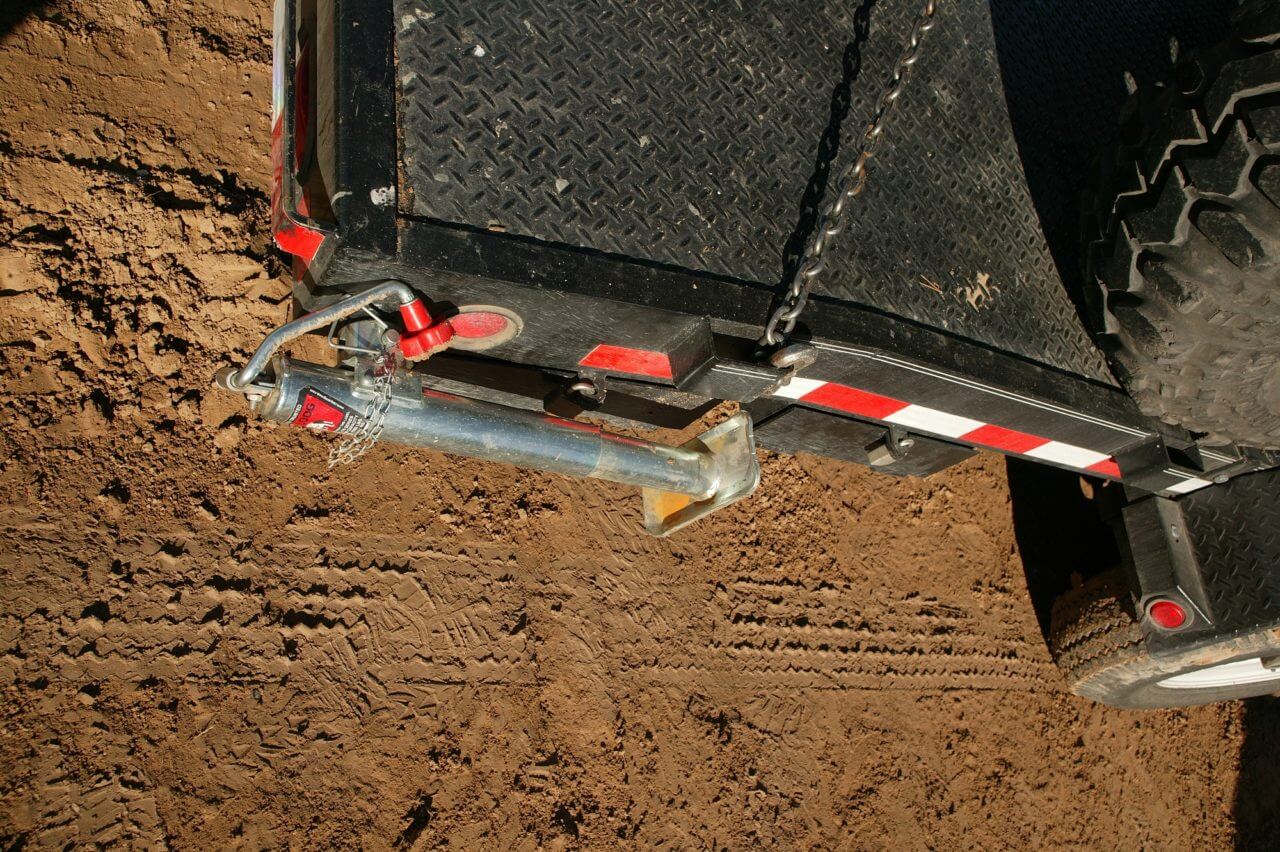
Rear corner jacks are helpful for loading and unloading heavy vehicles to keep the tow rig from being lifted off the ground. They also give you the flexibility of loading a trailer that is not hooked up to a vehicle without the trailer tipping when weight is applied to the back. Our favorite use though is to lift up a side of the trailer to change a tire or check the hubs and brakes.
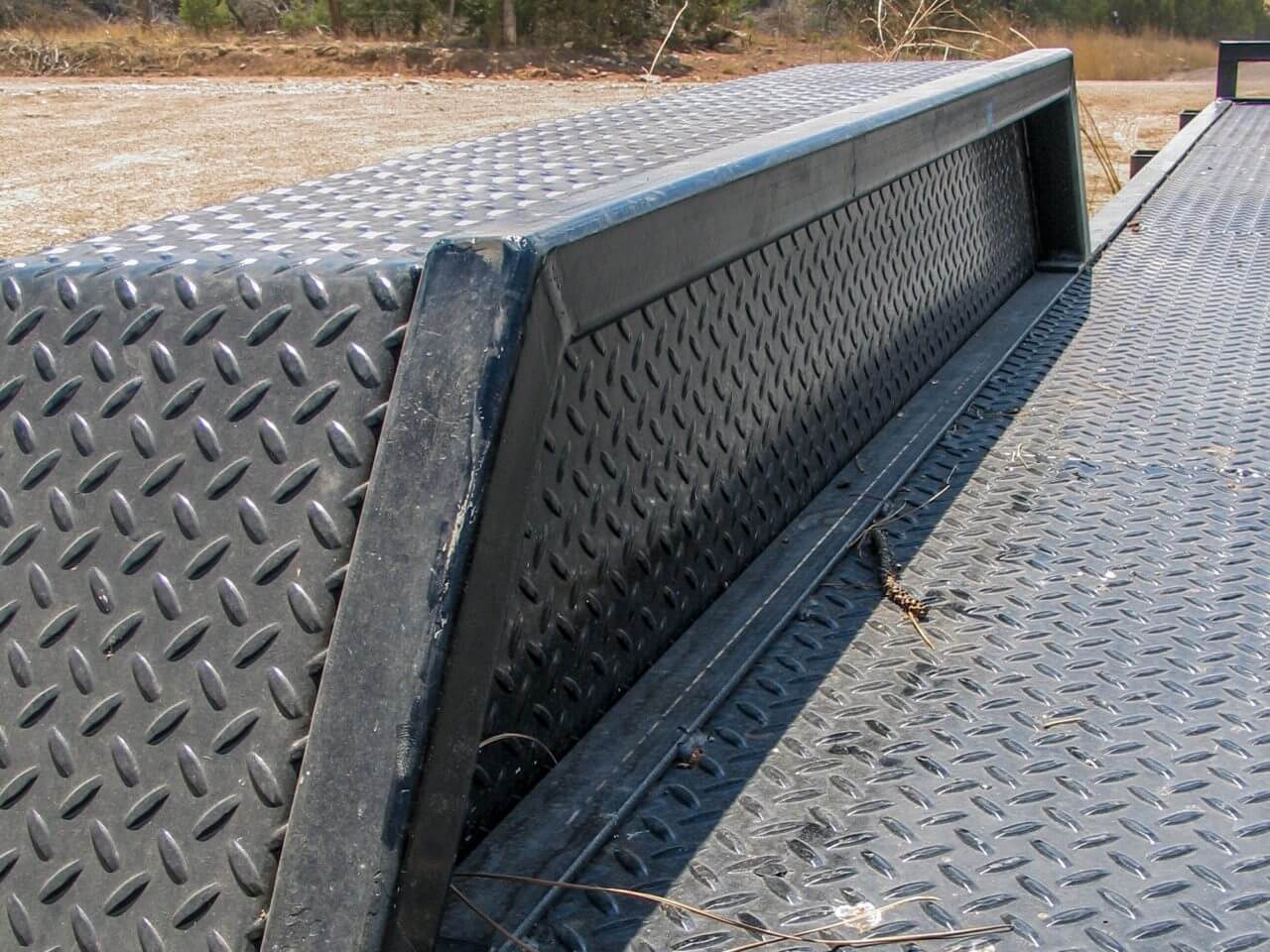
If your vehicle has fullsize axles, tubes like these are helpful to prevent your fenders from getting crushed. Alternatively, we have seen some people pin the fenders so that they are easy to remove when loading or unloading a vehicle.
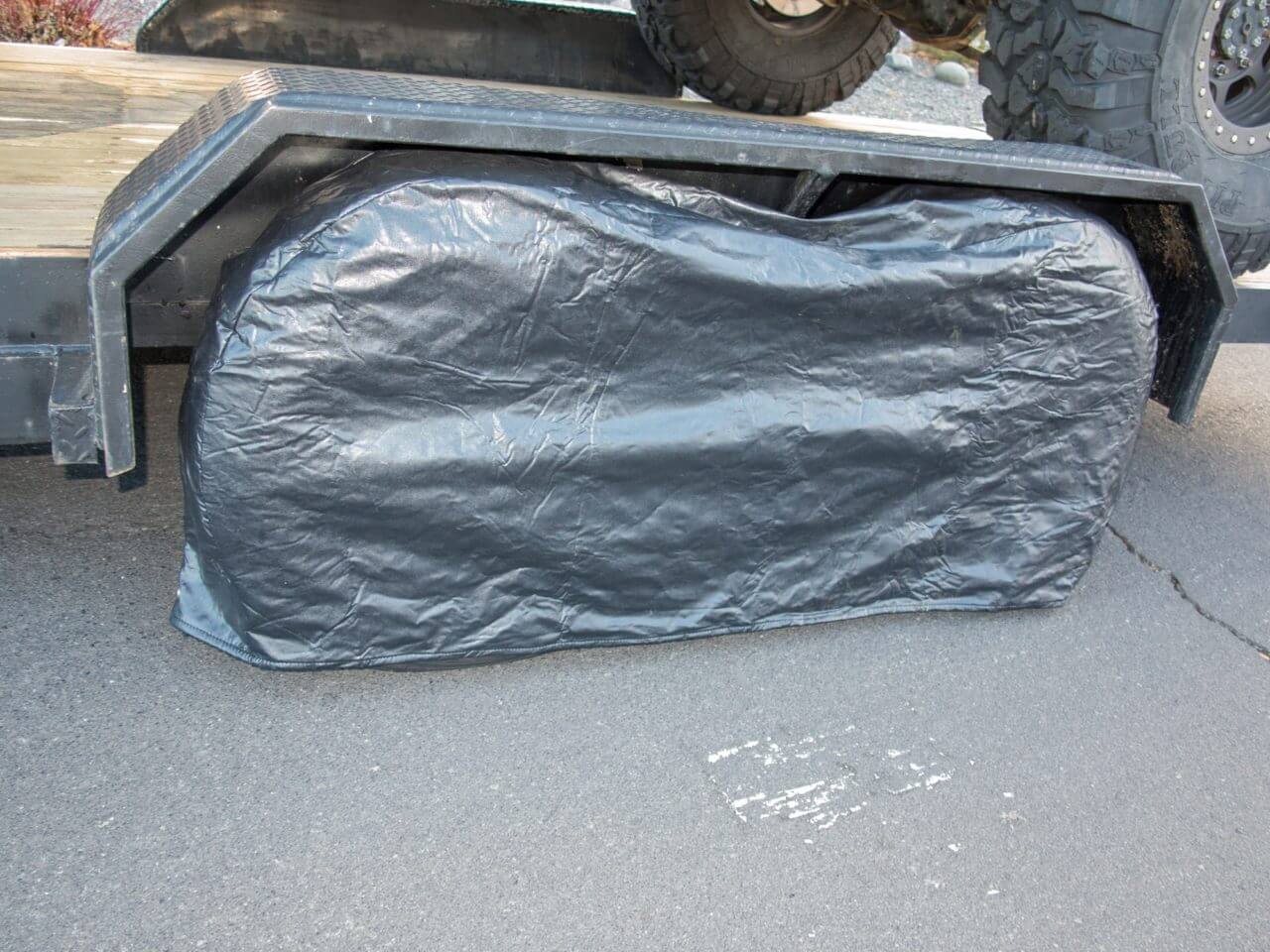
Trailers spend more time sitting than they do going down the road, so covering the tires when the trailer is not in use will prevent the tires from drying and cracking due to sun exposure. Also, regular maintenance of items like brakes and hubs is critical to ensure your trip goes smoothly.
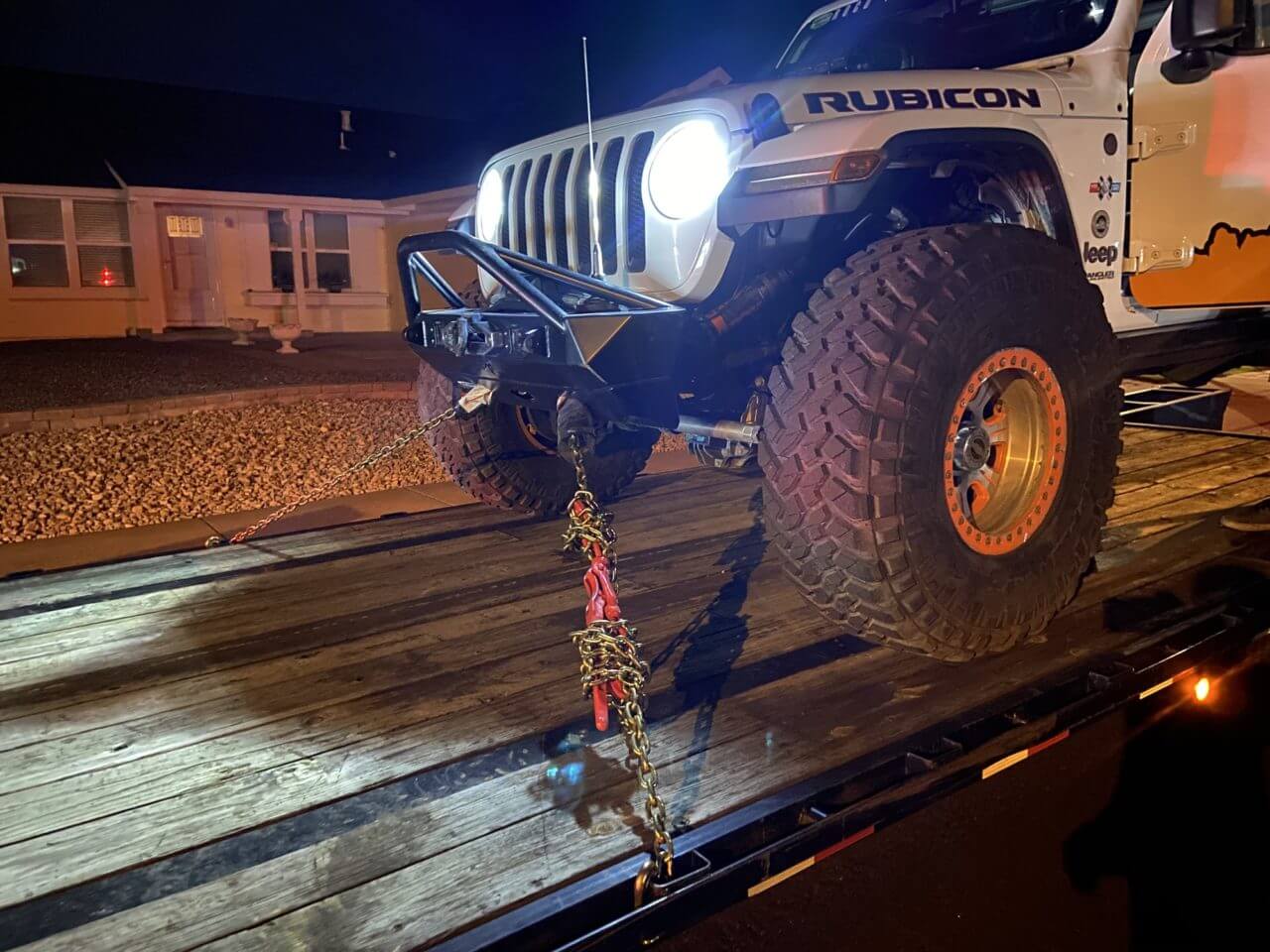
Heavy equipment operators prefer to use chains and binders over straps, and to tie to the chassis rather than the axles. This is fine with equipment that has limited suspension travel, but on an off-road vehicle you risk the suspension compressing and the chains coming loose as you go down the road.











2